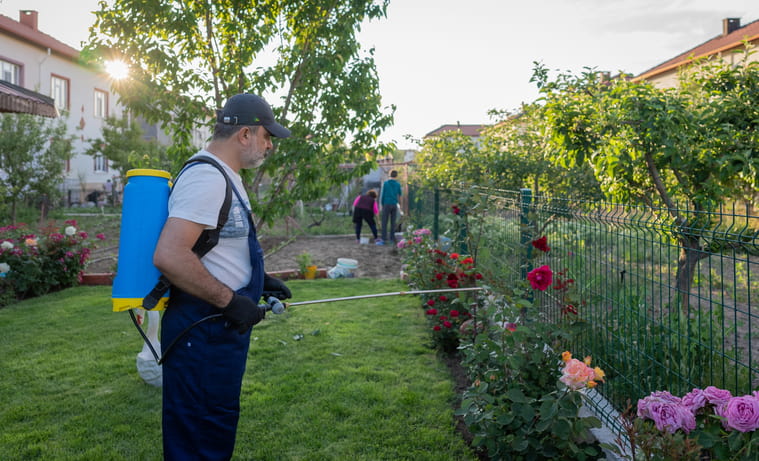A garden can be a haven for pests! A common knee-jerk response to the presence of these pesky critters is to reach for a chemical pesticide. Before listening to this inner urge, consider that insects are natural elements of any lawn and/or garden. Many insects pollinate and help control other more harmful pests. Pesticides are often harmful to humans, pets, wildlife, and the environment. Before you purchase a canister of organophosphates, pyrethroids, and/or carbamates, consider natural methods of garden pest management. The following are ways to control pests without harming yourself, your plants, or the environment.
Encourage biodiversity
Avoid planting similar species of flora in a block. Instead, plant different species near each other, creating a healthier ecosystem, confusing pests, and making it less likely that insects will spread.
Consider natural predators
Attracting and/or introducing natural predators is an effective means of garden pest management. These carnivorous insects keep a balance, ensure a healthy harvest, and promote lovely blooms. Spiders eat more insects than birds! Green lacewings eat soft-bodied bugs while ladybugs munch on aphids, chinch bugs, bean thrips, mites, and beetles. Hoverflies, praying mantids, soldier bugs, ground beetles, and assassin bugs are all beneficial for garden pest management.
Utilize Barriers and Traps
Instead of using chemical spray for garden pest management, prevent infestations by using physical barriers and/or insect traps.
- Row covers let in water and sunlight while preventing pests from reaching plants.
- Cloches are tiny greenhouses that act as a barrier but also help grow strong plants, enhancing natural resistance against garden pests.
- Barrier paper is made by creating a small slit in a square of cardboard milk carton and placing it over the base of a young seedling to prevent insects from laying their eggs.
- Yellow sticky traps are a tried and true method for capturing aphids, whiteflies, thrips, and fungus gnats.
- Maggot traps are sticky, red, and spherical. They help prevent apple maggots.
- Pheromone traps: These ingenious contraptions use mating scents to attract bugs and capture them on a sticky surface or in a sticky chamber.
Try Preventative Practices
Simple preventive practices can make a huge difference.
- Pull out weakened/infected plants as they attract insects.
- Build healthy soil by top dressing with natural fertilizers such as compost and manure. Healthy plants are more bug-resistant.
- Minimize soil disturbance by practicing no-till gardening to reduce the introduction of pests/insect eggs into the soil and increase beneficial microbes.
- Try seaweed mulch and/or spray to introduce trace elements, promoting healthy plant development that enables seedlings to withstand pests and disease.
- Reduce insect habitats by removing weeds and debris from your garden and using clean sources of mulch.
- Keep foliage dry to reduce fungal damage and insect infestation. Water early in the day or use drip-irrigation methods.
- Disinfect your tools after working with infested plants to reduce the spread of insects and/or insect eggs.
- Use certified transplants from a trusted source to reduce the introduction of disease and pests to your garden.
Incorporate Homemade Remedies
Non-toxic remedies made at home are inexpensive and often surprisingly effective.
- For soft-bodied bugs (aphids, mites, mealy bugs, etc.): Mix one tbsp oil with a few drops of dish soap and one liter of water. Shake and put in a spray bottle, applying on the top and bottom of leaves to smother the bugs.
- For grubs/Japanese beetles: Spread milky spore granules (available at garden centers) on the soil. A single treatment may sit inactive for up to forty years, waiting for grubs to infect.
- For mites: Add two tbsp cayenne pepper and a few drops of dish soap to a liter of water. Let stand overnight. Place in a spray bottle and apply.
- For slugs, earwigs, and soft-bodied bugs: Sprinkle diatomaceous earth around the edge of garden beds, damaging exoskeletons of bugs without harming plants, humans, or the environment.
- For wireworms: Place potato slices in planting areas a few days before seeding, drawing wireworms and allowing easy removal.
Finding garden pest management bewildering and/or overwhelming? Need help with an insect infestation in your backyard? Contact One Man and a Ladybug. We provide pest prevention and/or residential pest control.



